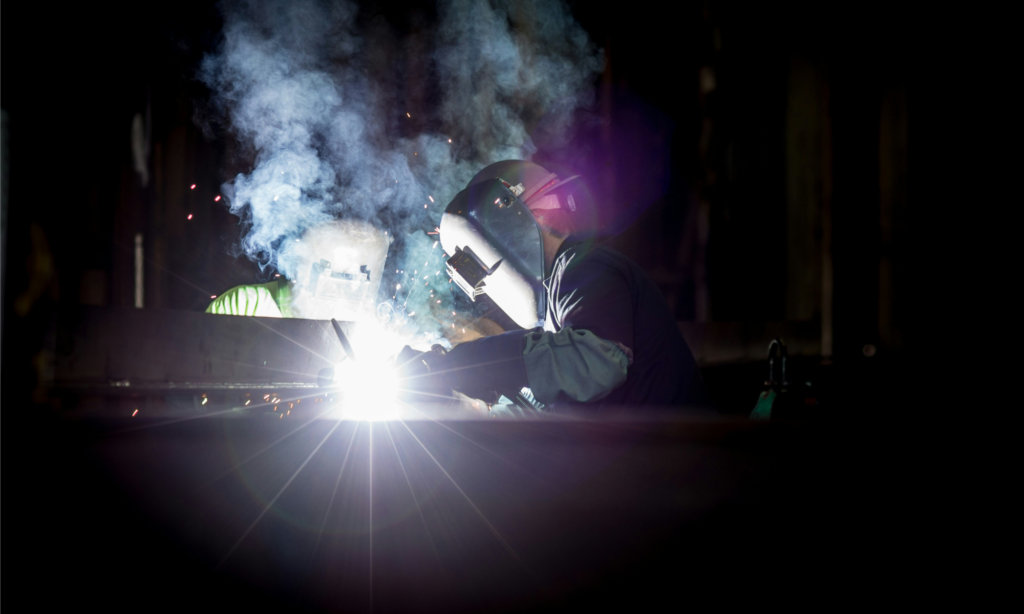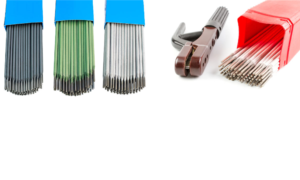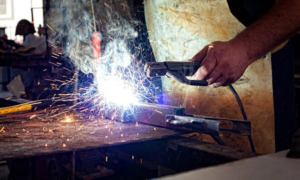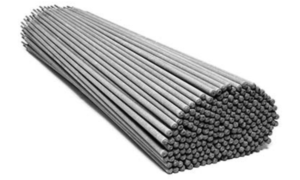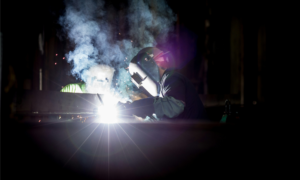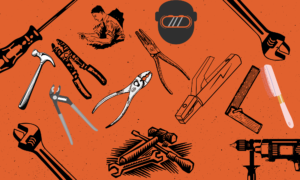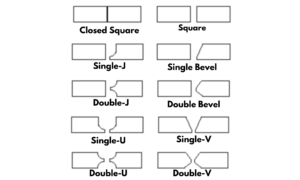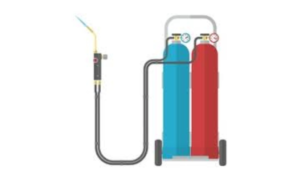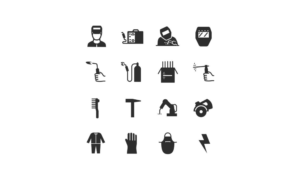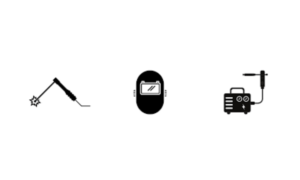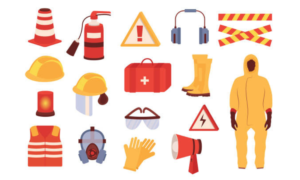What is the Most Common Type of Welding? An Essential Guide
The most common type of welding is MIG (Metal Inert Gas) welding. It is widely used due to its simplicity and efficiency.
MIG welding, also known as Gas Metal Arc Welding (GMAW), is popular in various industries. This technique uses a continuous wire feed as an electrode and an inert gas to shield the weld from contaminants. Its ease of use makes it suitable for beginners and professionals alike.
MIG welding is versatile and capable of welding different metals, such as steel, aluminum, and stainless steel. The process is fast, producing clean and strong welds with minimal spatter. Its adaptability to both thin and thick materials makes it a preferred choice for automotive, construction, and manufacturing industries.
Introduction To Welding
Welding is a process that joins two materials. It is essential in many industries. The welding process uses heat to melt the parts together. This bond is strong and durable. Welding is key in construction, manufacturing, and repairs.
The Role Of Welding In Modern Manufacturing
Welding is crucial in modern manufacturing. It helps create strong structures. Many products, like cars and ships, rely on welding. Skilled welders ensure these products are safe and functional. Factories use welding to build and repair machinery. This keeps production running smoothly.
Types Of Welding: A Brief Overview
There are several types of welding. Each type has its own unique uses and benefits. Here are some common types:
- MIG Welding: Uses a wire electrode and is easy to learn.
- TIG Welding: Uses a tungsten electrode and is precise.
- Stick Welding: Uses a stick electrode and works well outdoors.
- Flux-cored welding: is similar to MIG but uses a special wire.
The Prevalence Of Arc Welding
Arc welding is the most common welding type. It’s used in many industries. Professionals and hobbyists prefer it for its effectiveness. It joins metals using electricity. The process is reliable and versatile.
Characteristics Of Arc Welding
Arc welding uses a power supply. This creates an electric arc. The arc melts metals, joining them together. It works on both ferrous and non-ferrous metals.
- Requires electricity
- Produces high temperatures
- Melts metals to join them
- Used for various metal types
Arc welding can be manual or automated. It adapts to different environments. Professionals use it indoors and outdoors.
Why Arc Welding Is Popular
Arc welding is versatile. It works with many metals. It is also cost-effective. You don’t need expensive equipment.
| Reason | Details |
|---|---|
| Versatility | Works on many metals |
| Cost-effective | Affordable equipment |
| Reliability | Strong, durable welds |
Arc welding produces strong welds. The joints are durable and long-lasting. It’s a dependable method for many applications.
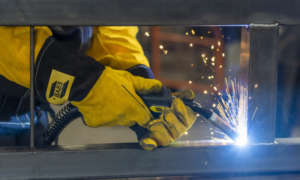
Exploring Mig Welding
Metal-inert gas (MIG) welding is the most common type of welding. It is widely used in various industries. This method is preferred for its simplicity and efficiency.
Basics Of Mig Welding
MIG welding uses a continuous wire electrode. The wire is fed through a welding gun. The gun also releases a shielding gas. This gas protects the weld pool from contamination. The process is semi-automatic or automatic. It is suitable for both thin and thick materials. Most metals can be welded using MIG.
Advantages Of Mig Welding
- High Efficiency: The continuous wire feed increases productivity.
- Ease of Use: It is easier to learn and operate.
- Versatility: Suitable for various metals and thicknesses.
- Cleaner Welds: The shielding gas reduces slag formation.
- Reduced Spatter: Produces less spatter compared to other methods.
MIG welding offers many advantages. It is efficient and versatile. It is also easy to learn. These benefits make it the most common welding type.
Tig Welding: Demystified
TIG welding is a popular welding method. It stands for Tungsten Inert Gas welding. This method is known for precision and control. TIG welding is widely used in various industries.
How Tig Welding Works
TIG welding uses a tungsten electrode. The electrode heats the metal. A shielding gas, usually argon, protects the weld area. The weld is clean and precise. The process requires skill and practice.
Benefits Of Tig Welding
- High-Quality Welds: TIG welding produces strong and clean welds.
- Versatile: It works on many metals, like steel and aluminum.
- Control: The welder has great control over the process.
- Less Smoke: TIG welding produces less smoke and fumes.
Stick Welding: An Oldie But Goodie
Stick welding, also known as Shielded Metal Arc Welding (SMAW), is a tried-and-true method. It’s been around for decades and remains popular. This technique uses a consumable electrode coated in flux to join metals. Despite newer methods, stick welding holds its ground due to its simplicity and effectiveness.
Understanding Stick Welding
Stick welding is a manual arc welding process. The welder uses a rod, or “stick,” to create an arc between the electrode and the metals being joined. The heat from the arc melts both the electrode and the workpieces, forming a strong weld. The flux coating on the electrode vaporizes during welding. This creates a shielding gas and slag, which protect the weld from contaminants. This process is straightforward and doesn’t require external shielding gas, making it ideal for outdoor or windy conditions.
| Element | Description |
|---|---|
| Electrode | A consumable rod coated in flux. |
| Arc | It is the electrical discharge that generates heat. |
| Flux | Protective coating that creates shielding gas. |
Why Stick Welding Remains Relevant
Stick welding is still widely used for many reasons. Here are some key points:
- Versatility: Works on various metals like steel, iron, and aluminum.
- Accessibility: Equipment is affordable and easy to find.
- Durability: Produces strong and reliable welds.
- Portability: No need for external gas tanks.
Stick welding is especially useful in construction and repair work. Its ability to perform well in different environments makes it a go-to method. Welders appreciate its reliability and ease of use, keeping it relevant in modern times.
Comparing Common Welding Types
Welding is a skill used in many industries. Different types of welding are used for different jobs. It is important to know which type of welding to use.
Mig Vs. Tig: A Detailed Comparison
MIG welding stands for Metal Inert Gas welding. It uses a wire as an electrode. This wire melts and joins the metals together. MIG welding is easy to learn. It is often used in car repair shops and for home projects. TIG welding stands for Tungsten Inert Gas welding. It uses a tungsten electrode. This electrode does not melt. Instead, a filler rod melts to join the metals. TIG welding is harder to learn. It is used for precise and clean welds. TIG welding is often used in aerospace and bike frame manufacturing.
| Aspect | MIG Welding | TIG Welding |
|---|---|---|
| Ease of Learning | Easy | Hard |
| Materials Used | Wire Electrode | Tungsten Electrode, Filler Rod |
| Common Uses | Car Repair, Home Projects | Aerospace, Bike Frames |
Arc Vs. Stick Welding: Choosing The Right Method
Arc welding is a process where an electric arc melts the metal. This method is very strong. It can be used on thick metals. Arc welding is often used in building and construction. Stick welding is a type of arc welding. It uses a stick electrode. This stick melts to join the metals. Stick welding is good for outdoor jobs. It can work well even if the metal is dirty or rusty.
- Arc Welding: is strong, used on thick metals, and common in construction.
- Stick Welding: Uses a stick electrode, good for outdoor and dirty metals.
Safety Measures In Welding
Welding involves high heat and bright light, which can be dangerous. Ensuring safety is crucial to prevent accidents. Here, we discuss key safety measures in welding.
Personal Protective Equipment
Using Personal Protective Equipment (PPE) is essential in welding. PPE includes:
- Welding Helmets: Protects eyes and face from sparks and UV rays.
- Gloves: shield hands from heat and sharp objects.
- Aprons: Protects the body from hot metal and sparks.
- Safety Glasses: Offer additional eye protection.
- Respirators: Filters harmful fumes and gases.
Always check your PPE for any damage before use. Damaged PPE can be ineffective and lead to injuries.
Best Practices For Welding Safety
Following best practices ensures a safe welding environment. Here are some tips:
- Proper Ventilation: Ensure the workspace is well-ventilated to avoid inhaling fumes.
- Inspect Equipment: Regularly check welding equipment for any defects.
- Clear Workspace: Keep the area free from flammable materials.
- Training: Ensure all welders are properly trained and certified.
- Emergency Preparedness: Have fire extinguishers and first aid kits readily available.
These practices reduce risks and enhance safety during welding operations.
| Safety Measure | Description |
|---|---|
| Proper Ventilation | Ensures clean air and reduces fume inhalation. |
| Inspect Equipment | Prevents accidents due to faulty tools. |
| Clear Workspace | Avoids fire hazards from flammable materials. |
| Training | Ensures welders know safety procedures. |
| Emergency Preparedness | Quick response to accidents and injuries. |
Remember, safety in welding is non-negotiable. Always prioritize it.
Choosing The Right Welding Technique
Choosing the right welding technique is crucial for any project. The welding method you select can impact the quality and strength of your welds. Let’s explore the factors to consider and expert recommendations for selecting the best welding technique.
Factors To Consider
- Material Type: Different materials require different welding techniques.
- Thickness: Thicker materials need more robust welding methods.
- Position: The position of the weld affects the technique.
- Environment: Environmental conditions can impact welding quality.
- Skill Level: Some techniques are easier for beginners.
Expert Recommendations
Experts recommend choosing a technique based on your specific needs. Here are some popular welding methods:
- MIG Welding: Ideal for beginners and thin materials.
- TIG Welding: Best for precision and high-quality welds.
- Stick Welding: Suitable for outdoor and thicker materials.
- Flux-Cored Welding: Great for heavy-duty projects and strong welds.
Consider the factors and expert advice to choose the right welding technique for your project. This will ensure strong and reliable welds every time.
Frequently Asked Questions
What Are The Two Most Common Types Of Welds?
The two most common types of welds are butt welds and fillet welds. Butt welds join two pieces end-to-end, while fillet welds join surfaces at right angles.
What Is The Most Common Weld Used In The Industry?
The most common weld used in the industry is shielded metal arc welding (SMAW). It’s versatile and widely used.
What Is the Most Basic Welding?
The most basic welding is stick welding, also known as shielded metal arc welding (SMAW). It uses a consumable electrode.
What Is the Most Common Welding Machine?
The most common welding machine is the MIG welder. It is popular for its ease of use and versatility.
Conclusion
MIG welding stands out as the most common type of welding. Its ease of use and versatility make it popular. Both beginners and professionals prefer MIG welding for various projects. Understanding its benefits can help you choose the right method.
Explore more to master this essential welding technique.

